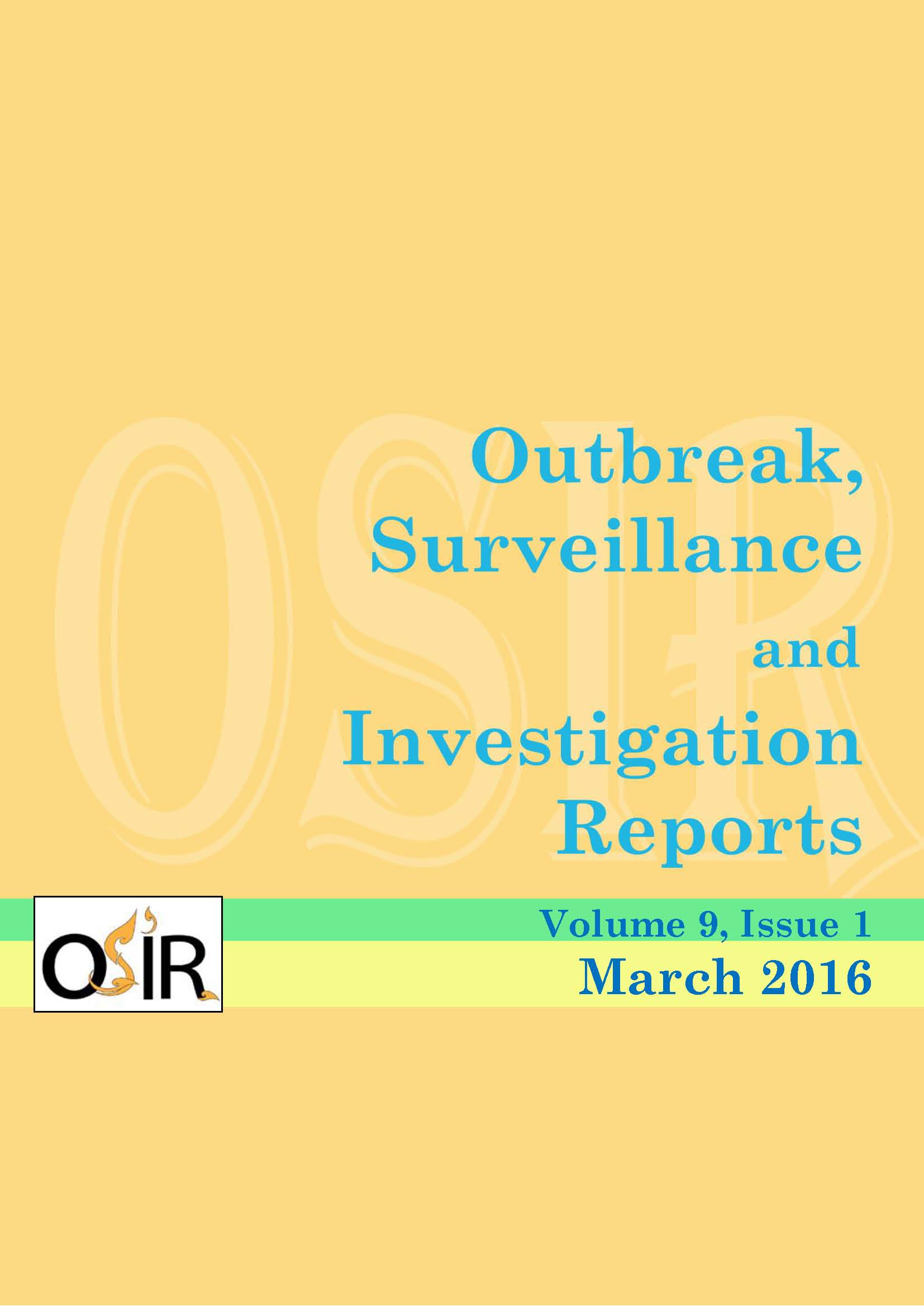Census versus Capture-recapture Method to Estimate Dog Population in Lumlukka District, Pathum Thani Province, Thailand, 2010
DOI:
https://doi.org/10.59096/osir.v9i1.263225Keywords:
Capture-recapture, census, dog population, rabies, vaccination coverage, ThailandAbstract
Although reliable data for dog population is essential for designing an effective strategy for rabies vaccination, it is difficult to precisely estimate the dog population, especially the stray dogs. This study estimated the dog population by census and capture-recapture method (CR), characterized dog population, described practicality and feasibility, and estimated the rabies vaccination coverage. Ten urban and rural areas in Lumlukka District, Pathum Thani Province were randomly selected. Results showed that stray dog population from census was lower than CR estimates in both urban and rural areas. The census showed that the majority of dogs were confined owned dogs in the urban area (70%) and unconfined owned dogs in the rural area (96%). The stray dog population from census was 8.0% in the urban and 4.4% in the rural areas. Rabies vaccination coverage among dogs in the urban was 84% and in the rural was 65%. Although CR method used less time and people than census, it was more complicated. The census method might underestimate the number of stray dogs while the CR failed to include the confined owned dogs. Therefore, the census method could be a preferable method to collect data of owned dogs and CR could provide a better estimate of stray dog population. Both methods could be used to monitor the rabies control program and plan for effective strategy to eradicate rabies in Thailand.
References
Meslin FX, Fishbein DB, Matter HC. Rationale and prospects for rabies elimination in developing countries. Curr Top Microbiol Immunol. 1994;187:1-26.
Harischandra PAL. Veterinary aspects of rabies. In: Dodet B, Meslin F-X, editors. Rabies Control in Asia. Paris: Elsevier. 1997. p. 191-3.
World Health Organization. Guidelines for dog rabies control. 1987 [cited 2011 Feb 15]. <http://www.who.int/rabies/animal/dogs/en/>
Pounghut A. Hungsuwan W. Rabies situation in Thailand. Journal Med Assoc Thai.2005;88(9):1319-22. Thai.
Matter HC, Wandeler AI, Neuenschwander BE, Harischandra LP, Meslin FX. Study of the dog population and the rabies control activities in the Mirigama area of Sri Lanka. Acta Trop. 2000 Feb 25;75(1):95-108.
Thailand. Bureau of Epidemiology. Department of Disease Control. Ministry of Public Health. National trustworthy and competent authority in epidemiology surveillance and investigation, R506
surveillance system. Thai [cited 2011 Feb 15]. <http://www.boe.moph.go.th/boedb/surdata/disease.php.ds=42>
Wongphruksasoong V, Chuxnum T, Chumkasien P, Siriarayaporn P, Panichchapong P, Chanachai K, et al. Situation of animal rabies in Thailand, January 2009 to June 2010. Report of animal disease surveillance of Bureau of Disease Control and Veterinary Service. 2011 Aug;18:4-8.Thai.
Chomel BB. The modern epidemiological aspects of rabies in the world. Comp Immunol Microbial Infect Dis.1993 Jan;16(1):11-20.
Childs JE, Robinson LE, Sadek R, Madden A, Miranda ME, Miranda NL. Density estimates of rural dog populations and an assessment of marking methods during a rabies vaccination campaign in the Philippines. Prev Vet Med. 1998 Jan;33(1-4):207-18.
Kato M, Yamamoto H, Inukai Y, Kira S. Survey of the stray dog population and the health education program on the prevention of dog bites and dog-acquired infections: a comparative study in Nepal and Okayama Prefecture, Japan. Acta Med Okayama. 2003 Oct;57(5):261-6.
Chaisawa K, Jongrakwattana B, Tongtiang W. Using mark-recapture method to estimate rural dog populations size. Technical Journal of Animal Health & Sanitary Bureau Regional 9. 2008;6:1-12. Thai.
Nungsee N. Application of capture-recapture method for estimate of population size in epidemiology. Journal of KMUTNB. 2005 Jul-Sep;15(3):56-60. Thai.
Student Laboratory Handbook. Department of Physics. Illinois State University. 2014 Oct 4 [cited 2015 Feb 1]. <http://www2.phy.ilstu.edu/~wenning/slh/>
Tenzin T, Ahmed R, Debnath NC, Ahmed G, Yamage M. Free-Roaming Dog Population Estimation and Status of the Dog Population Management and Rabies Control Program in Dhaka City, Bangladesh. PLoS Negl Trop Dis. 2015 May 15;9(5):e0003784. eCollection 2015.
Muhammad ZY, Muhammad Q, Sadia Z, Mutiur RK, Usman AA, Sanaullah K. Rabies molecular virology, diagnosis, prevention and treatment. Virol J. 2012 Feb 21;9:50.
Downloads
Published
How to Cite
Issue
Section
License
Copyright (c) 2023 Outbreak, Surveillance, Investigation & Response (OSIR) Journal

This work is licensed under a Creative Commons Attribution-NonCommercial-NoDerivatives 4.0 International License.








